Panasonic Lumix S 100mm f2.8 Macro review
-
-
Written by Gordon Laing
Intro
The Panasonic Lumix S 100mm f2.8 Macro is a short telephoto lens with 1:1 close-up capabilities. It’s designed for the full-frame L-mount system, which means it works on L-mount bodies from Panasonic, Sigma and Leica. I tested it on the Lumix S5 II, one of the best value full-framers around and if you’re interested in this body, check out my Lumix S5 II review.
As always my full review and results are in the video below, but if you prefer to read the written highlights, keep scrolling!
Announced in January 2024, the S 100 becomes Panasonic’s first macro lens for the L-mount system. It doubles the native macro options for full-frame L-mount owners, joining Sigma’s earlier 105mm f2.8 DG DN from 2020 which costs just over two thirds the price at around $700 or pounds.
Note Leica also has a 60mm f2.8 Macro lens for the L-mount, but it’s designed for smaller APSC sensors, or full-frame bodies in crop modes, so if you want a proper full-frame L-mount macro, it’s down to the Sigma 105 and the Lumix S 100.
Both of these lenses are capable of delivering life-size 1:1 reproduction or 1x magnification from a reasonable focusing distance, and also double-up as good portrait options with a similar focal length and the same f2.8 maximum aperture.
But physically they’re quite different beasts, and despite sharing the same 74mm diameter, the newer Lumix lens is over 50mm shorter and less than half the weight of the Sigma. Indeed it’s around half the weight of equivalent macro lenses for other systems too, making it one of the most compact full-frame macro lenses to date. You’ll also notice it’s similar in size and weight to the other Lumix f1.8 prime lenses, which should mean minimal if any rebalancing on stands and gimbals.
Lumix S 100mm f2.8: 74x82mm, 300g // Sigma 105mm f2.8 DG DN: 74x134mm, 715g
In terms of design and controls, it’s pretty simple, matching the other primes in the series. There’s a generous and smooth manual focusing ring, and a pair of switches including a focus limiter with three ranges: 20 to 50cm, 50cm to infinity, or the full-range.
Panasonic describes the lens as being dust, splash and freeze-resistant down to minus 10 celsius, and there’s a rubber grommet at the mount. Meanwhile at the other end is the same 67mm filter thread as the other primes in the series, minimising accessories. Panasonic also includes a bayonet-mounted lens hood which can be reversed for transportation.
In terms of autofocus, the lens felt swift on the S5 II whether photographing normal or macro distances. Like all macro lenses, the speed and confidence will benefit from setting the focus limiter, so when shooting macro, go for the 20-50cm range, and for normal use, the 50cm to infinity should suffice.
Now for my optical results, and as a macro lens, I’m going to start with the close-up capabilities, kicking-off with a bokeh ball comparison.
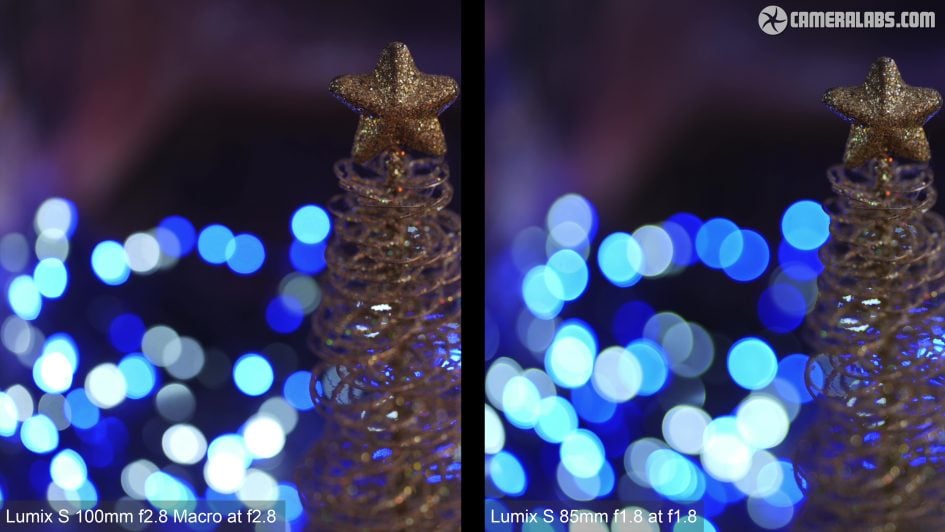
Above: So here’s the S 100 Macro on the left and the S 85 on the right, both from the same distance of around 80cm and at their maximum respective apertures of 2.8 and 1.8. This is as close as the 85 will focus, and from the same position it’ll deliver slightly larger bokeh balls with its larger aperture more than making up for a slightly shorter focal length. In terms of rendering though, their style is very similar.
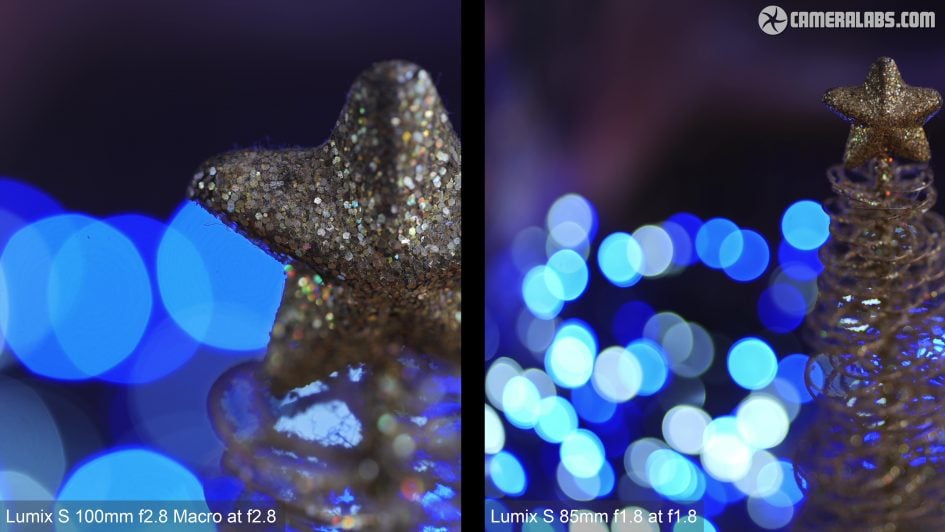
Above: But of course the S 100 on the left can focus much closer, so let’s switch it for one taken from a closer distance where the difference is dramatic. But this is only around 0.5x magnification, so now let’s switch this for a close as the lens can focus where it’ll deliver 1x magnification, more than filling the frame with the star atop the ornament, see below.
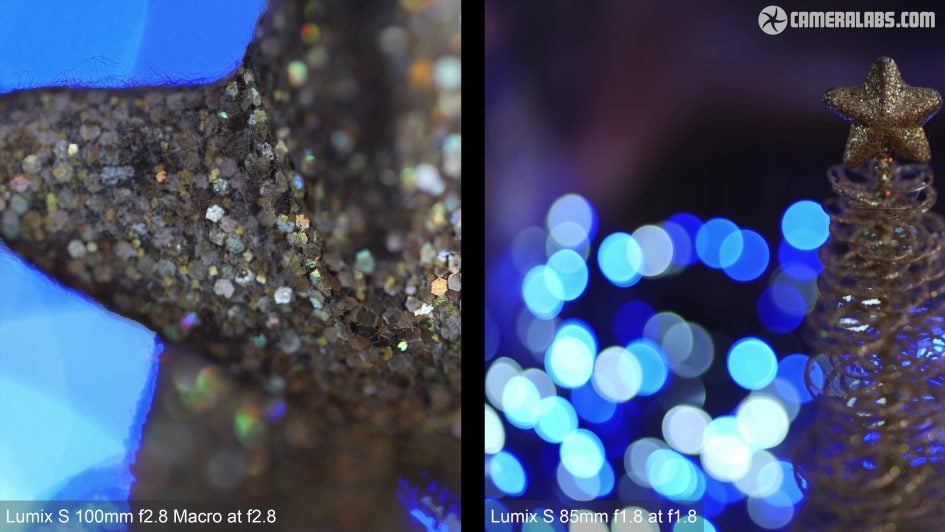
The Lumix S 100 delivers its maximum magnification from a distance of 20.4cm, versus around 30cm on the Sigma lens. Both allow you to be positioned far enough from the subject to avoid casting shadows, and once you’ve taken the lens barrel into consideration, you’re looking at a gap of around 11cm from the tip of the Lumix lens to the subject for 1:1 reproduction.
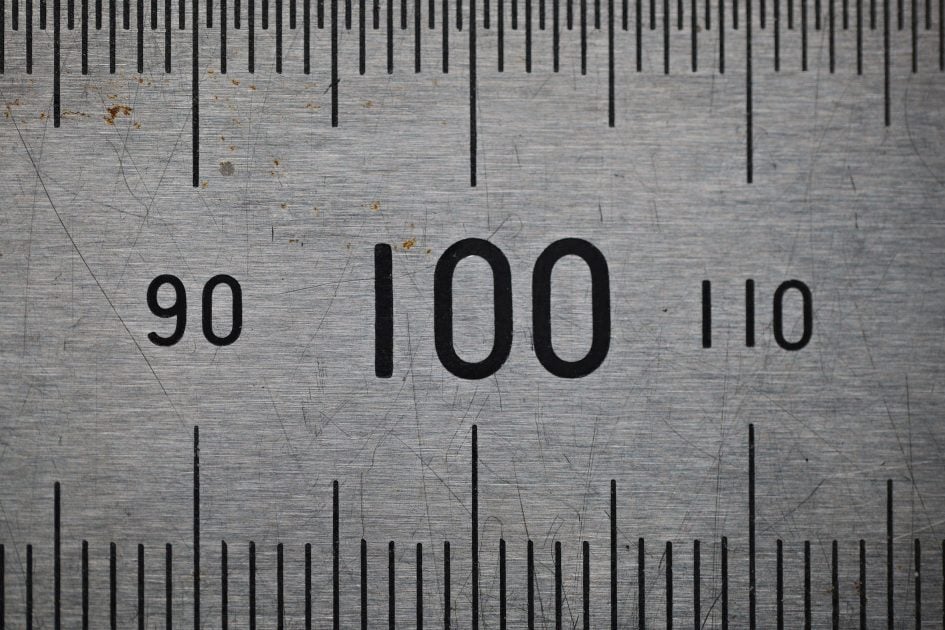
I confirmed the maximum magnification by photographing my ruler as close as I could focus on it, delivering 34mm across the frame. Given the S5 II sensor measures 35.6mm across, this represents fractionally greater than 1:1 reproduction.
I think more importantly though, it’s an impressively flat field, with little to no distortion, and sharp details into the corners even wide-open at f2.8. As I close the aperture, there’s some benefit to ultimate sharpness and lifting any vignetting, but I was impressed by the quality at f2.8 from the closest focusing distance. Here’s some more shots at the minimum distance and maximum magnification.
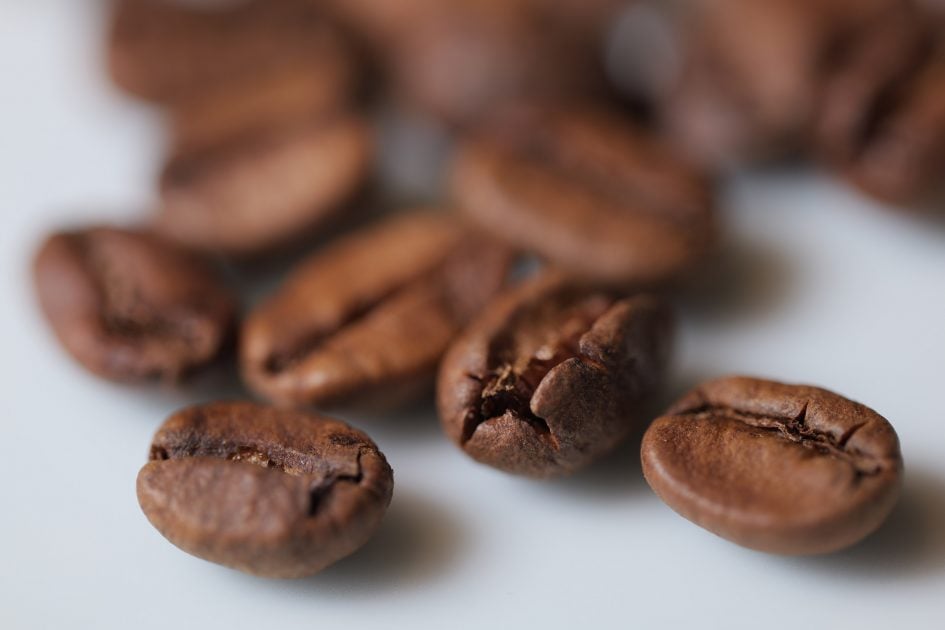
Above: As you can see from this distance and aperture, the depth of field is unforgivably shallow at f2.8, so for greater depth, stop the lens down.
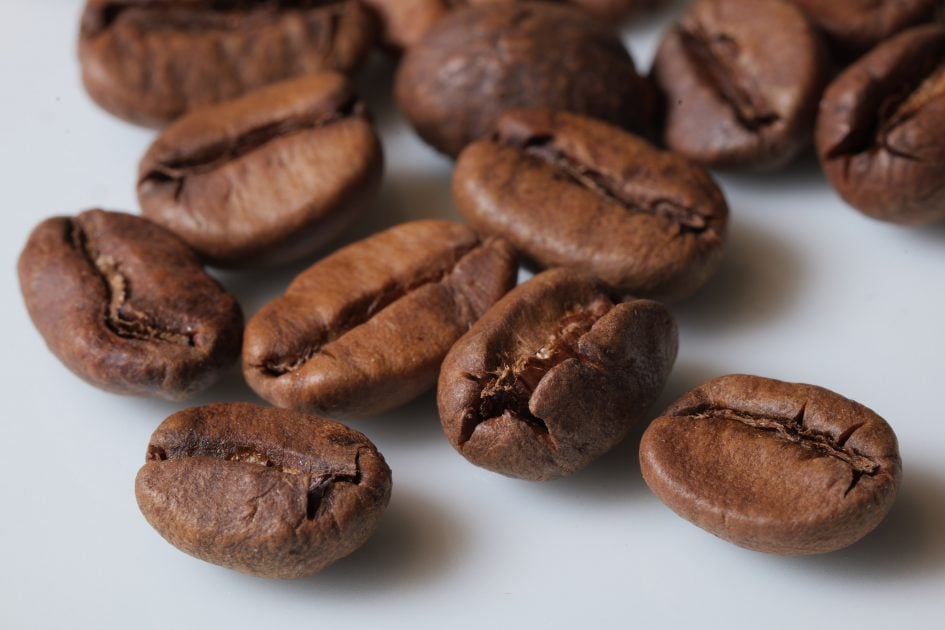
Above: This version was taken at f16.
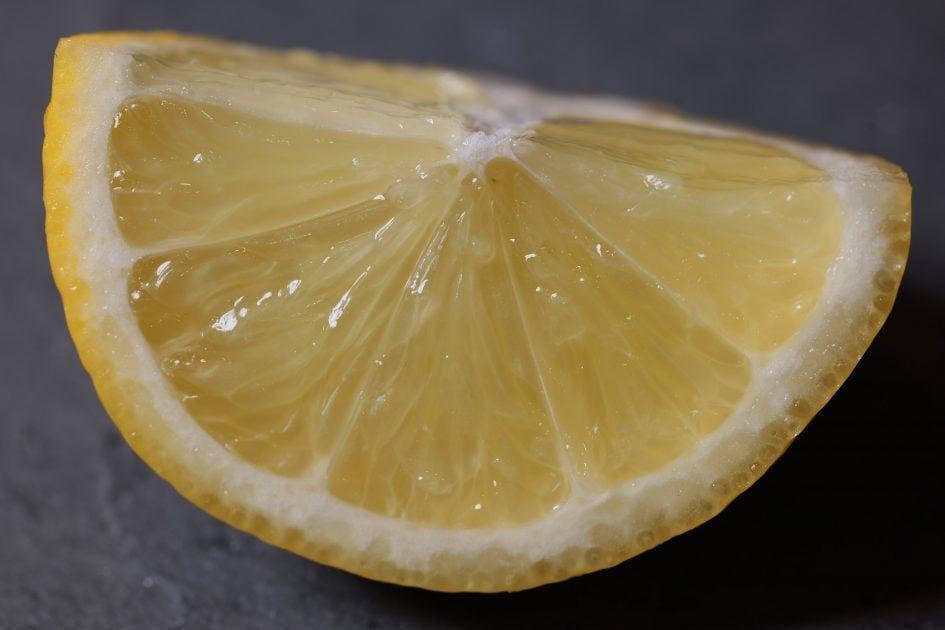
Above: If you’re new to 1:1 macro, you may be surprised how shallow the depth of field is even with the lens closed a few stops. I took this lemon wedge at f8 where there’s still some blurring beyond the surface.

Above: Here I’ve stuck with f8 to capture more of the fine details between the pages…
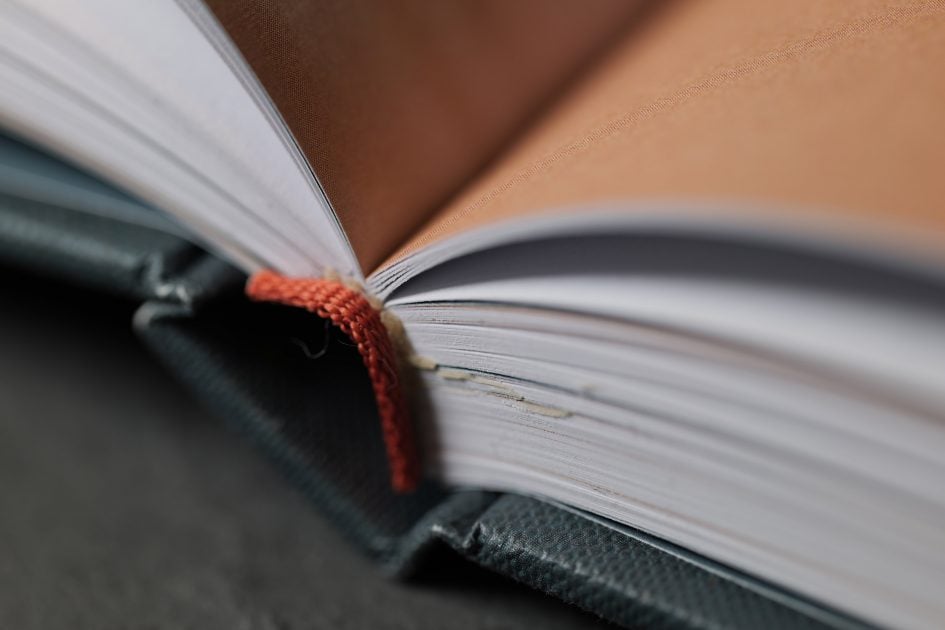
Above: …although you may prefer the look of this version at f2.8.

Above: Personally I love how macro photography reveals details in everyday subjects you’re rarely aware of, like these Maldon sea salt crystals snapped at f11.
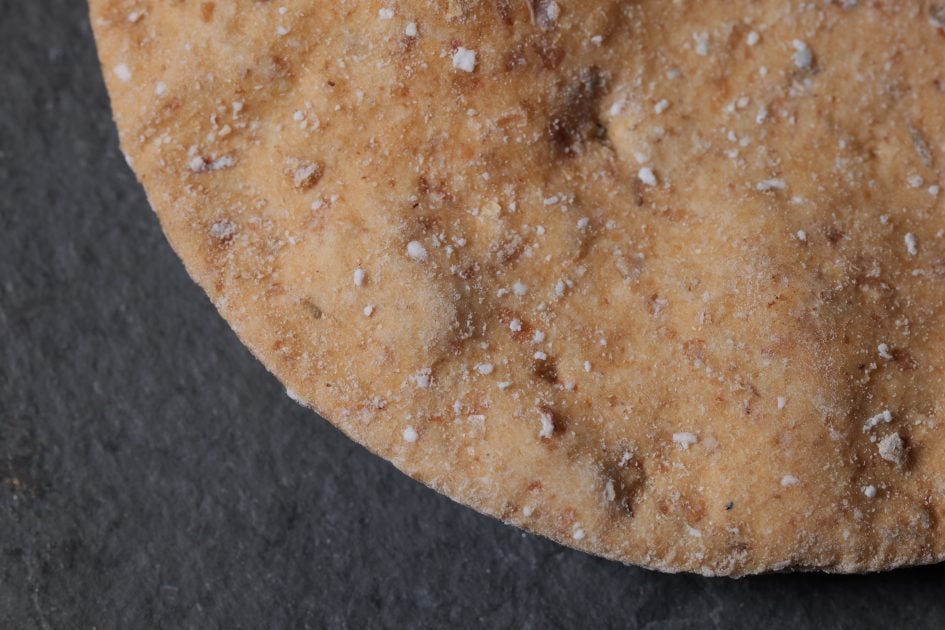
Above: Or this cheese biscuit, again at f11.
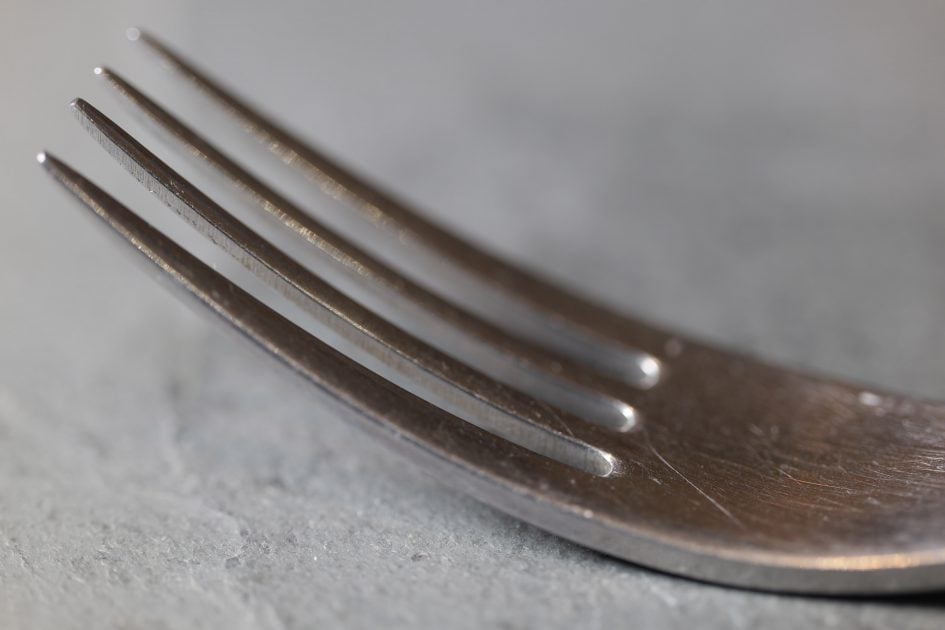
Sometimes I prefer the creative opportunities at f2.8 though, such as this fork or this Christmas decoration, both benefiting from some nice blurring.
While the autofocus did a good job at close distance, especially when the range was reduced, I prefer to nail the focus manually to ensure the desired portions are sharp. The smooth and nicely damped manual focus ring on the lens makes this easy, although do note while breathing is minimal at normal distances, there’s substantial differences when adjusting the focus within the closest couple of centimeters.
While breathing isn’t uncommon on macro lenses at their closest distances, I did wonder how this might affect focus stacking, so to try it out, I positioned a UK pound coin with the lower edge positioned at the minimum focusing distance. I then set up a focus bracketed sequence on the S5 II, and after some experimentation, found I needed 80 frames at intervals of 3 to capture focused strips of the coin from front to back.
As I scroll through the sequence from the front to the rear of the coin, note how the effect of breathing gradually shrinks the subject size as the lens adjusts from its closest focus to a couple of centimeters further. To see if this would present a problem during the composite, I imported the 80 image sequence into Helicon Focus, my preferred software for stacking. You can see it here gradually combining the focused elements of each image into a single one.
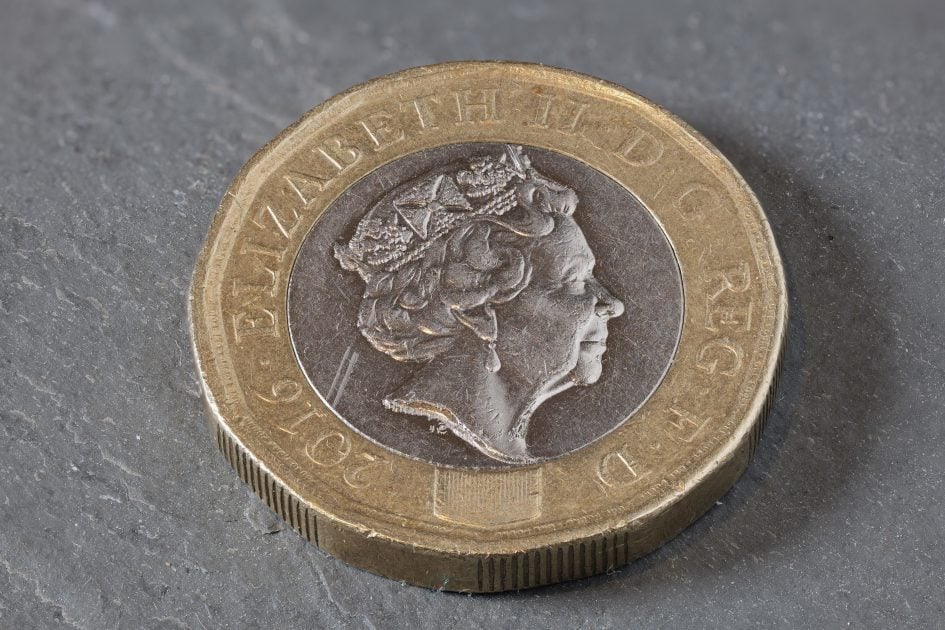
Above: here’s the end-result, showing not just the entire coin’s surface in sharp focus as desired, but also apparently unaffected by any magnification differences due to breathing. As such I wouldn’t say it’ll be an issue for anyone who’s into focus stacking to increase the depth of field.
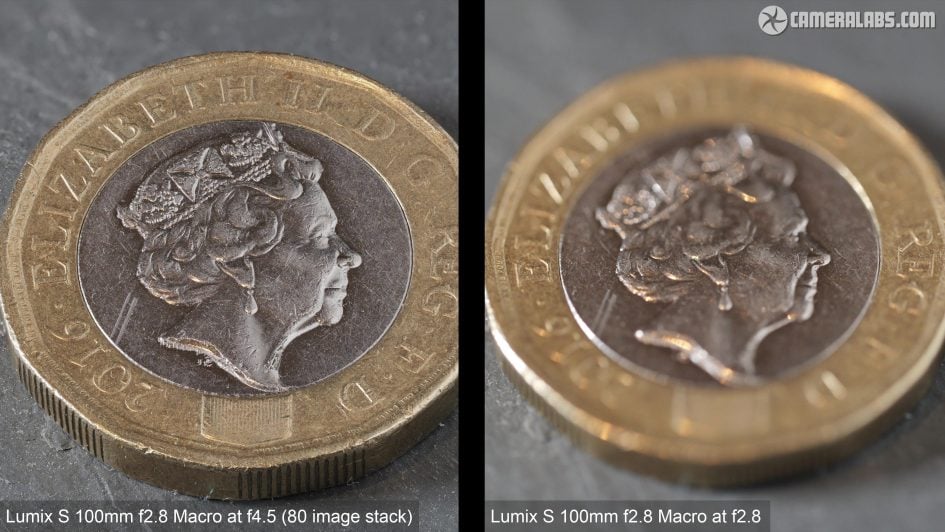
Above: Before moving onto more normal distances, I thought it would be interesting to compare the stacked coin image on the left with a single image on the right, this time focused in the middle and starting wide-open at f2.8 where obviously only a narrow plane is in focus.
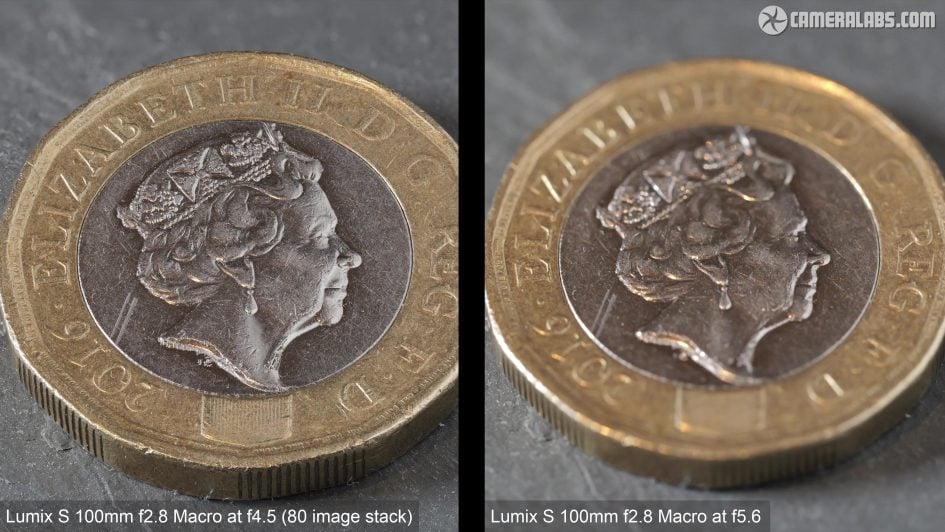
Above: And now for the single frame on the right at f5.6…
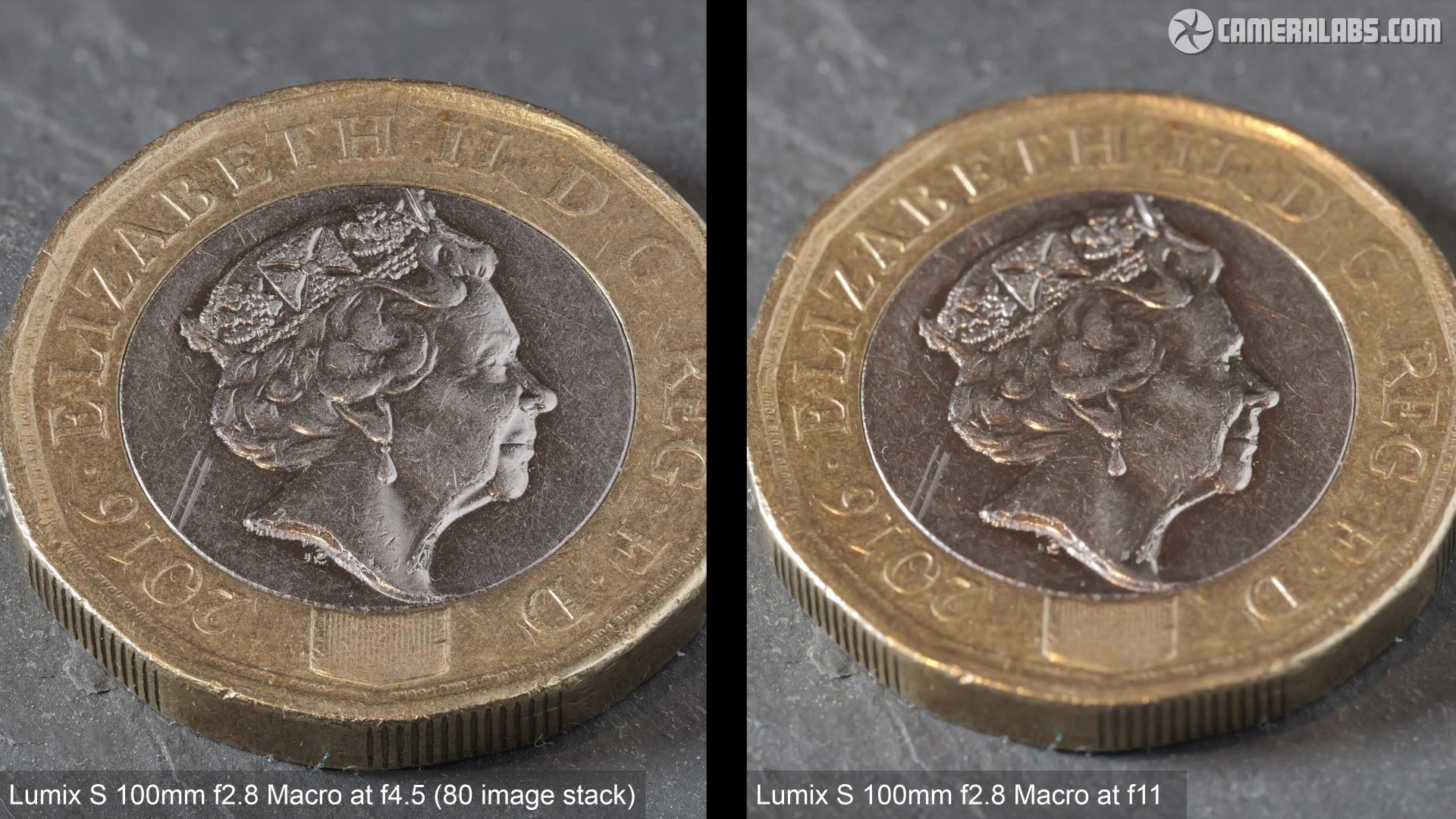
Above: and next at f11, where there’s still insufficient depth of field to have a fully sharp surface.
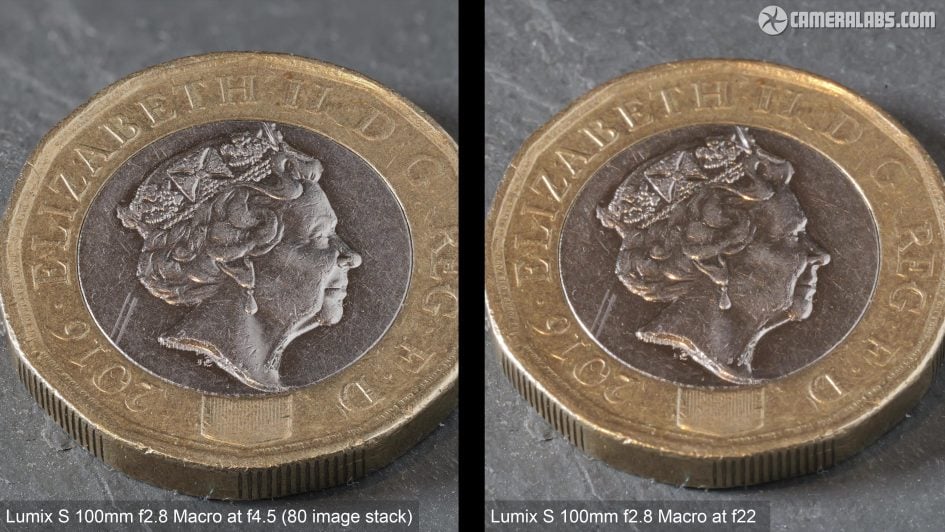
Above: And while the lens can be closed to f22, it’s still not enough for this subject, while additionally suffering from softening due to diffraction, not to mention having an increased risk of camera shake or the necessity of a higher ISO. This is why stacking is a popular technique for macro photographers.
So a solid overall performance from the Lumix S 100 as a 1:1 Macro lens, but how about more normal distances?
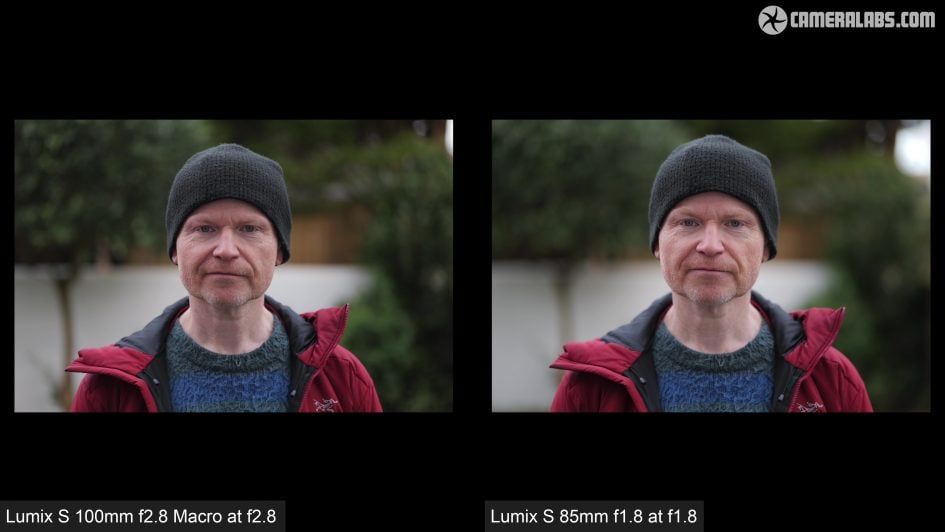
Above: Let’s put the 100 2.8 Macro on the left and compare it with the 85 1.8 on the right, both at their maximum apertures. The camera’s in the same position, but I’ve moved forward a little for the 85 to roughly match the subject size on the frame. You can see how the 85 has captured a slightly wider field of view thanks to its slightly shorter focal length, but also delivered more blurring in the background thanks to both its larger aperture and my slightly closer distance.
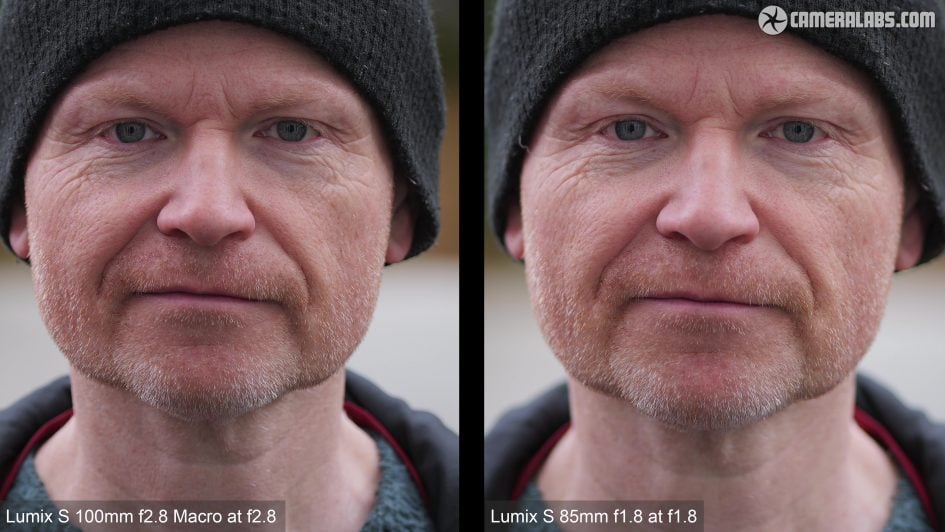
Above: But look closer and you’ll see the 100 2.8 Macro on the left has sharper details on my eyes versus the 85 wide-open. The 85 will roughly match it when it’s also set to 2.8, but the 100 is certainly performing well as a portrait lens. You can of course also use either lens to present video to camera with similar results, and here you can see the 100 2.8 Macro focusing as close as you dare to stand.
And finally a test of the lens at more of a landscape distance, with Brighton Pier angled so that details run into the corners. I’ve focused in the middle of the frame here, and starting with the lens wide open to f2.8 you’ll enjoy sharp details in the centre with minimal benefit to closing the aperture any further.
Moving out into the corner of the f2.8 image you’ll find details remain respectably sharp and only minor evidence of daring due to vignetting. As you close the aperture, you’ll quickly eliminate any corner darkening, and there’s also minor gains in ultimate sharpness, but again the lens is performing well across the frame even wide-open.
Check prices on the Panasonic Lumix S 100mm f2.8 Macro at B&H, Adorama, WEX UK or Calumet.de. Alternatively get yourself a copy of my In Camera book, an official Cameralabs T-shirt or mug, or treat me to a coffee! Thanks!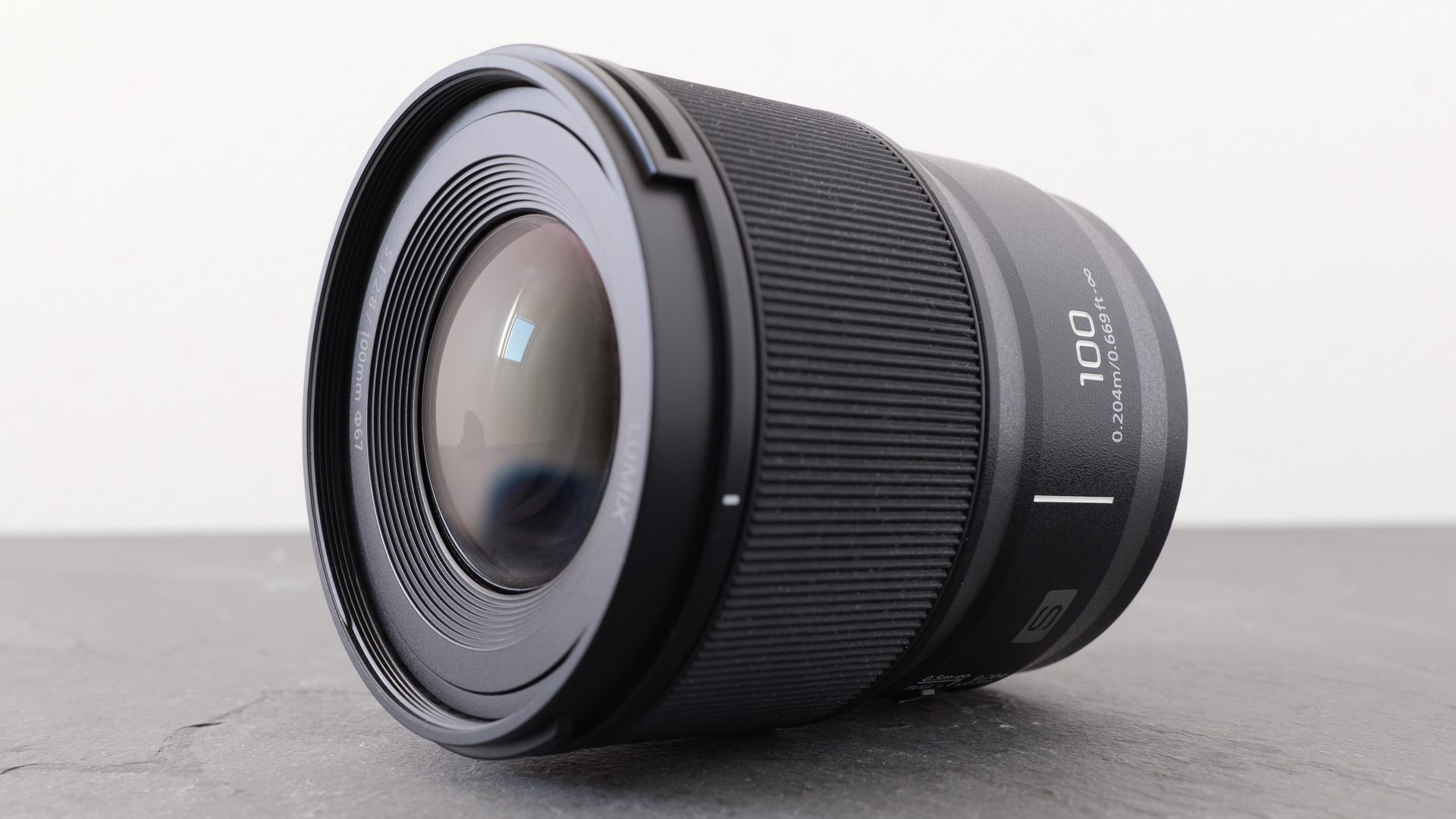
 The Lumix S 100mm 2.8 Macro is a welcome addition to the L-mount system, delivering sharp results across the frame, near and far. In my tests it was equally sharp whether shooting landscapes at infinity, portraits from a meter or so, or right up to its closest focusing distance. With the subject around 11cm from the tip of the lens, you’ll achieve life-size 1x magnification, again with sharp details and minimal distortion. It’s not the only game in town for L-mount owners though, as Sigma’s older 105mm f2.8 DG DN also delivers 1x magnification on full-frame bodies from a similar focal length with the same aperture, and a lower price. I’ve not tested the Sigma so can’t comment on the quality, but the Lumix lens is comfortably shorter and less than half the weight, making it a much more portable proposition, not to mention a more consistent match for the existing Lumix S primes. Compare them closely, but one thing’s for certain: the Lumix S 100 f2.8 Macro delivers the goods at all distances with an impressively compact form factor. Highly recommended for L-mount owners who want a great quality macro lens which also doubles as a decent portrait and short telephoto option.
The Lumix S 100mm 2.8 Macro is a welcome addition to the L-mount system, delivering sharp results across the frame, near and far. In my tests it was equally sharp whether shooting landscapes at infinity, portraits from a meter or so, or right up to its closest focusing distance. With the subject around 11cm from the tip of the lens, you’ll achieve life-size 1x magnification, again with sharp details and minimal distortion. It’s not the only game in town for L-mount owners though, as Sigma’s older 105mm f2.8 DG DN also delivers 1x magnification on full-frame bodies from a similar focal length with the same aperture, and a lower price. I’ve not tested the Sigma so can’t comment on the quality, but the Lumix lens is comfortably shorter and less than half the weight, making it a much more portable proposition, not to mention a more consistent match for the existing Lumix S primes. Compare them closely, but one thing’s for certain: the Lumix S 100 f2.8 Macro delivers the goods at all distances with an impressively compact form factor. Highly recommended for L-mount owners who want a great quality macro lens which also doubles as a decent portrait and short telephoto option.



